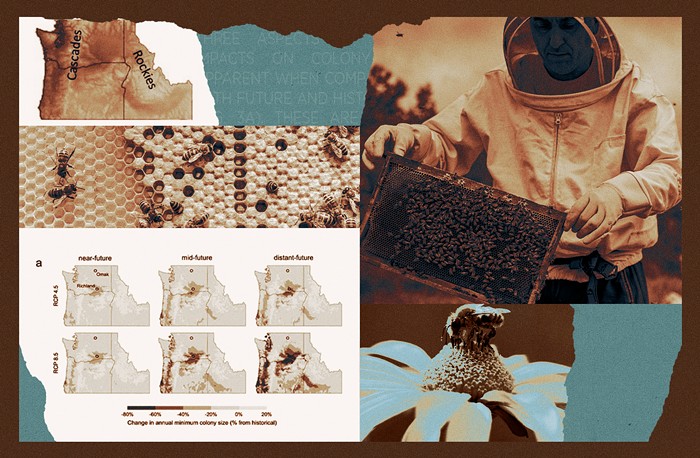
Fire Guts Natural History Museum in Delhi, Prompts Reflection: Natural history museum collections are invaluable for scientific topics ranging from evolutionary biology and systematics to toxicology and our understanding of diseases like, yes, Zika. Collections serve as libraries of the natural world, preserving and organizing hundreds of thousands of specimens dating back hundreds of years. And despite common perceptions of museums as overlooked, dusty archives, they remain a major frontier for scientific discovery. Which is why it’s not an exaggeration to describe news of a fire that completely destroyed India’s National Museum of Natural History on Tuesday as nothing but tragic—particularly as faulty fire-safety mechanisms might have extinguished it if they had been maintained. And maintenance always costs money. But we live in an age where everything is about cutting costs.
The fire also puts an uncomfortable spotlight on financial support for the upkeep of natural history museums in our own country. This past March, the National Science Foundation put its Collections in Support of Biological Research program, a major source of funding for museum collections around the country, on hiatus. While the NSF is currently soliciting feedback on the decision, the squeeze is already being felt at museums across the country. This is true both at relatively well-supported institutions like the University of Washington’s Burke Museum (which, for the sake of full disclosure, I am affiliated with) and at more financially precarious institutions like the University of New Mexico’s Museum of Southwestern Biology.
In the short term, this funding crunch can mean research programs based at natural history museums are put on hold. In the long term, it can make museums vulnerable to accidents like the one in Delhi and to permanent closure, leaving their collections—and all we might learn from them—with an uncertain future.
Photographs show fire destroying India's natural history museum https://t.co/ASocz93sIj
— Kwai Chi (@kwaichi) April 27, 2016
We Now Know Much More About Tiny Titanosaurs: Sadly, one of the many priceless objects lost in the blaze at Delhi museum was a 160-million-year-old fossil from a sauropod dinosaur, the largest land animals ever to walk on earth. But in better sauropod-related news, research from team a of paleontologists at Macalaster College and the University of Washington has shed light on their poorly known life cycle. By examining cross sections of a fossilized baby sauropod’s bones, the team was able to infer its rate of growth, which was over an order of magnitude (3.4 kg to 40 kg) in fewer than 80 days. Additionally, a comparison of the relative proportions of baby titanosaur bones to those of adults showed they were nearly identical, suggesting the species was self-sufficient and mobile immediately after birth. Their paper, which has perhaps the most adorable title of any paper ever published in the journal Science, is available here.
Moral Framing Affects Attitudes Toward Climate Change: The American public’s pervasively high rates of climate change denial in the face of overwhelming scientific evidence is a source of frustration to researchers and a major impediment in regulating pollution from the world’s second largest source of carbon dioxide emissions.
Why have efforts to address this misunderstanding been so unsuccessful, and why are these beliefs so polarized along political lines? The results of a study investigating the influence of moral framing on attitudes toward climate change offer a clue, and potentially a way forward. Oregon State University psychologist Chris Wolsko and colleagues conducted an experiment investigating the influence of moral framing on attitudes toward climate change. While the attitudes of politically liberal respondents on environmental issues remained constant regardless of how they were presented, politically conservative respondents showed more pro-environment attitudes when issues were framed in moral terms. This meant, as the study put it, that “protecting the natural environment was portrayed as a matter of obeying authority, defending the purity of nature, and demonstrating one's patriotism to the United States.” Here’s hoping the argument proves an effective tool to changing minds at a larger scale.
Science Event of the Week: The “Pleistocene Overkill” hypothesis posits that a wave of extinctions of large land animals between 60,000 and 14,000 years ago was the result of overhunting following the initial spread of humans across the globe. It’s a perennially contentious topic in biology and anthropology, with ramifications for how we view our ancestors’ role in prehistoric ecosystems, and own role today. (I recommend Tim Flannery’s classics The Future Eaters and The Eternal Frontier if the topic piques your interest.) Anthropologist Donald Grayson will address Pleistocene extinctions in North America at this year’s University of Washington Faculty Lecture, which is free and open to the public at 7 p.m. in Kane Hall on Thursday, April 28.
More science events can be found over at The Stranger’s science calendar.














